Exploring Animal Babies That Match Your Baby's Size in Pregnancy

Reviewed by: HiMommy Expert Board
·
5 min read
·
Jun 11, 2025
Table of contents
Pregnancy is an incredible journey that brings about numerous changes and milestones for both the expectant mother and the growing baby. One fascinating aspect of pregnancy is tracking the growth and development of the baby, which can be measured in terms of its size. To put things into perspective, it can be interesting and informative to compare the size of the baby to that of different animal babies. From tiny water bears to adorable babies of snow leopards, these comparisons help us understand just how remarkable the process of pregnancy truly is.
Curious about how your baby grows each week, comparing its size to different animals or fruits? Download our app for detailed weekly illustrations and an interactive 3D baby model. Click below to download.
Alternatively, you can scroll down to check out the weekly list.
Child Size in the First Trimester
Week 3: Water Bear (1 mm)
At week 3 of pregnancy, the baby is just 1 mm in size. This is comparable to the size of a water bear, also known as a tardigrade. These microscopic creatures are known for their incredible resilience and ability to survive almost anywhere, including extreme conditions like outer space. Though tiny, these little creatures pack a powerful punch.

Week 4: Ladybug Larva (0.39 cm)
By week 4, the baby has grown to about 0.39 cm. This is roughly the size of a ladybug larva. Ladybugs go through a metamorphosis just like butterflies, and their larval stage is characterized by a tiny, elongated body. As the baby grows, it begins to develop its major organs and systems.
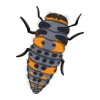
Week 5: Honeybee (0.79 cm)
At week 5, the baby measures around 0.79 cm. This is similar in size to a honeybee. These industrious insects are vital for pollination and play a crucial role in the ecosystem. Similarly, the baby's development is progressing rapidly, with the formation of the neural tube and the beginning of limb bud development.
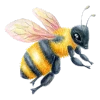
Week 6: Bumblebee (1.04 cm)
By week 6, the baby has reached approximately 1.04 cm in size, similar to that of a bumblebee. Bumblebees are known for their fuzzy bodies and busy nature, mirroring the busy growth happening inside the expectant mother's womb. The baby's heart is now beating, and facial features are beginning to form.
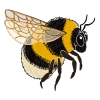
Week 7: Hummingbird Chick (1.27 cm)
At week 7, the baby measures around 1.27 cm, which is comparable to the size of a hummingbird chick. These tiny birds are known for their rapid wingbeats and extraordinary ability to hover. Similarly, the baby is growing rapidly, and major organs such as the liver, stomach, and intestines are beginning to develop.

Week 8: Mouse Lemur Baby (1.57 cm)
By week 8, the baby has grown to approximately 1.57 cm. This size is similar to that of a mouse lemur baby, one of the smallest primates in the world. Just like the baby, mouse lemur babies are incredibly small but continue to grow and develop at a remarkable pace.

Week 9: Baby Hamster (2.30 cm)
At week 9, the baby measures around 2.30 cm, comparable to the size of a baby hamster. These tiny rodents are known for their cuteness and ability to fit in the palm of your hand. The baby's facial features, such as the nose, lips, and eyelids, are becoming more defined during this period.
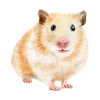
Week 10: Baby Squirrel (3.1 cm)
By week 10, the baby has reached approximately 3.1 cm in size, similar to that of a baby squirrel. Baby squirrels are often found nested in trees, just like the baby itself nestled inside the mother's uterus. The baby's skeleton is beginning to develop, and it is now considered a fetus rather than an embryo.
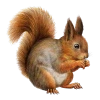
Week 11: Baby Chinchilla (4.1 cm)
At week 11, the baby measures around 4.1 cm, which is comparable to the size of a baby chinchilla. These adorable furballs are known for their soft and dense fur, much like the baby's developing skin. During this time, the baby's fingers and toes are formed, and it is becoming more active and responsive to touch.
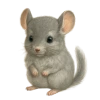
Week 12: Baby Hedgehog (5.4 cm)
By week 12, the baby has grown to approximately 5.4 cm, similar to the size of a baby hedgehog. Hedgehogs are known for their spiky exteriors, and similarly, the baby's skin is covered with a fine layer of hair called lanugo by this stage. The baby's sex organs are forming, although it is still too early to determine the gender.

Baby Size in the Second Trimester
Week 13: Baby Rabbit (6.7 cm)
At thirteen weeks, your baby is about the size of a fluffy baby rabbit. Just imagine your little one growing and developing their tiny features, resembling the cuteness of a newborn bunny.

Week 14: Baby Beaver (14.7 cm)
Moving on to week fourteen, your baby has more than doubled its size, matching the length of a baby beaver. Their limbs are gradually becoming more defined as they prepare for life outside the womb.

Week 15: Baby Skunk (16.7 cm)
By week fifteen, your little one measures around the same size as a baby skunk. Although they may not come with the distinctive markings, your baby is growing in strength and capability.
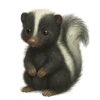
Week 16: Baby Raccoon (18.6 cm)
At this stage, your baby has reached the proportions of a cheeky baby raccoon. Their movements may become more noticeable to you, as their tiny body becomes more active.

Week 17: Baby Opossum (20.4 cm)
Week seventeen marks a significant milestone, as your baby matches the size of a baby opossum. Their organs are developing rapidly, and soon they will be ready to explore the outside world.

Week 18: Baby Ferret (22.2 cm)
By week eighteen, your little one is approximately the same length as a fuzzy baby ferret. As their body grows, they continue to develop unique characteristics that are just waiting to be discovered.
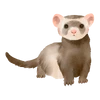
Week 19: Baby Prairie Dog (24.0 cm)
At the halfway point of your pregnancy, your baby is about the size of a baby prairie dog. Their facial features continue to form, and you may even catch a glimpse of their tiny nose on an ultrasound.
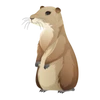
Week 20: Baby Fox (25.7 cm)
By week twenty, your baby has reached the size of an adorable baby fox. Their movements are becoming more coordinated, and you may start feeling more distinct kicks and wiggles.
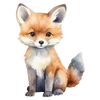
Week 21: Baby Cougar (27.4 cm)
Your baby has progressed to the size of a baby cougar by week twenty-one. Their bones are becoming stronger, and their senses are developing, helping them prepare for the world outside.
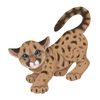
Week 22: Baby Badger (29.0 cm)
In week twenty-two, your baby measures around the size of a tiny baby badger. As their body grows, they are also busy practicing their reflexes, sucking their thumb, and even hiccuping in the womb.

Week 23: Baby Marmot (30.6 cm)
By week twenty-three, your baby is similar in length to a cute baby marmot. Their skin is becoming more opaque, and their little body is gaining more fat to keep them warm.
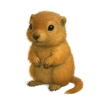
Week 24: Baby Bobcat (32.2 cm)
At twenty-four weeks, your baby is as long as a darling baby bobcat. Their brain is developing rapidly, and they may start displaying signs of sleep and wake cycles.
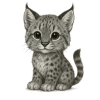
Week 25: Baby Coyote (33.7 cm)
By week twenty-five, your baby measures around the same size as a mischievous baby coyote. Their movements are becoming more coordinated, and they may respond to external sounds and voices.
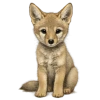
Week 26: Baby Lynx (35.1 cm)
As you enter week twenty-six, your baby reaches the length of a tiny baby lynx. Their lungs are maturing, and they are beginning to blink their eyes, preparing for the world they will soon join.

Week 27: Baby Gray Fox (36.6 cm)
At twenty-seven weeks, your baby is about the same size as a fluffy baby gray fox. Their respiratory system is advancing, and they are developing their own unique set of fingerprints.
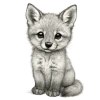
Baby Size in the Third Trimester
Week 28: Baby Dingo (37.6 cm)
At the 28-week mark, your baby is about the size of a baby dingo. Just like these adorable Australian canines, your little one is growing strong and developing their senses.

Week 29: Baby Jackal (39.3 cm)
By week 29, your baby has reached the size of a baby jackal. These curious and intelligent creatures are known for their playful nature, just like your growing baby.
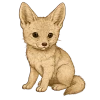
Week 30: Baby Wallaby (40.5 cm)
Your baby has now grown to the size of a baby wallaby, a small marsupial native to Australia. Wallabies symbolize adaptability, reminding us of how resilient and flexible our little ones are becoming.
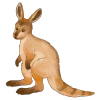
Track your baby's weekly growth with helpful tips on what to eat - and what to skip - during pregnancy. Download our app now to get these insights and more, including comparisons of your baby's size to different fruits or animals.
Week 31: Baby Capybara (41.8 cm)
At 31 weeks, your baby is comparable in size to a capybara baby. These gentle giants are known for their social nature, reflecting the growing awareness and connection your baby is forming with you.
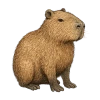
Week 32: Baby Wolverine (43.0 cm)
As your baby enters the 32nd week, they've grown to resemble a baby wolverine. Wolverines may be small in size, but they possess incredible strength and determination, just like your little one.
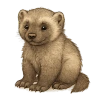
Week 33: Baby Red Panda (44.1 cm)
By week 33, your baby is the size of a baby red panda. These adorable creatures are known for their vibrant fur and playful personalities, mirroring the joy and excitement that your growing baby brings to your life

Week 34: Baby Cheetah (45.3 cm)
Your baby has now reached the size of a baby cheetah, a symbol of agility and speed. As your baby's muscles and coordination develop, they are preparing for the world outside the womb.
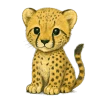
Week 35: Baby Leopard (46.3 cm)
At 35 weeks, your baby is comparable in size to a baby leopard. These majestic cats represent confidence and grace, reminding us of the strength and beauty of life growing inside you.

Week 36: Baby Jaguar (47.3 cm)
Your baby has now grown to the size of a baby jaguar, a symbol of courage and power. Just like these magnificent felines, your little one is getting ready to explore the world with all their might.

Week 37: Baby Panther (48.3 cm)
By week 37, your baby resembles a baby panther, representing resilience and adaptability. Your little one is preparing for a smooth transition into the outside world, demonstrating strength and determination.
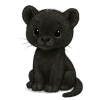
Week 38: Baby Lion (49.3 cm)
At 38 weeks, your baby is comparable in size to a baby lion, the king of the animal kingdom. Your little one's arrival is right around the corner, and they are ready to make their grand entrance.
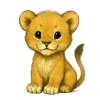
Week 39: Baby Tiger (50.1 cm)
By week 39, your baby has reached the size of a baby tiger. Tigers are known for their strength and independence, just like your little warrior who is preparing for their journey outside the womb.
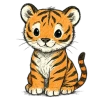
Week 40: Baby Otter (51.0 cm)
Your baby is now the size of a baby otter. These playful and social animals represent fun and companionship, reminding us of the joy and love that will soon fill your life.

Week 41: Baby Snow Leopard (51.8 cm)
At 41 weeks, your baby has grown to resemble a baby snow leopard. These elusive creatures are known for their beauty and grace, symbolizing the anticipation and longing that comes with the final days of pregnancy.
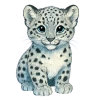
Summary
In conclusion, comparing baby sizes to the sizes of animal babies can provide a fascinating perspective on the growth and development of a human fetus. From the tiny water bear at just 1 mm to the adorable baby snow leopard at 51.8 cm, the journey from conception to birth is truly remarkable.
Understanding the relative size of the fetus can help expectant parents appreciate the incredible process happening inside the womb. Each week brings a new milestone and a chance to marvel at the intricate development taking place.
Experience your baby's growth in a whole new way with our app. You can see their size each week, compared to fruits and animals, and even track your contractions when the time comes.